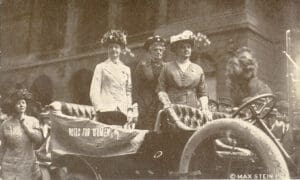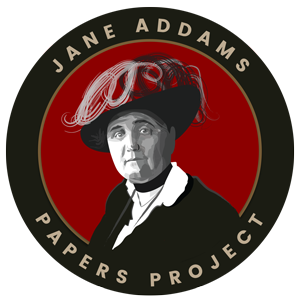The Selected Papers of Jane Addams, Volume 5: The Foremost Woman in the World, 1908-1913
Edited by Stacy Lynn, with Cathy Moran Hajo and Victoria Sciancalepore.
Forthcoming, (University of Illinois Press).

This volume presents an annotated selection of Jane Addams’s correspondence, speeches, and publications from 1908 to 1913 — years when she was widely recognized as one of the most influential reformers and thinkers in the United States. The book traces her evolution from a social reformer rooted in settlement work to a national figure advocating for women’s suffrage, labor reform, racial justice, and peace.
Part 1: Writing Truth (1908–1910) situates Addams at the height of her literary and reform prominence with the success of The Spirit of Youth and the City Streets (1909) and Twenty Years at Hull-House (1910). Her writing was both intellectual and practical — a way to share “sympathetic knowledge” derived from lived experience.
Part 2: Let Us Get Ready for the Vote (1911–July 1912) reveals Addams’s new focus to woman suffrage. Her speeches and writings argued that women’s enfranchisement was essential to reforming industrial society, improving labor conditions, and ensuring justice for women and children. She became first vice president of the National American Woman Suffrage Association and toured the country on behalf of the cause.
Part 3: I Have Become a Full-Fledged “Bull Moose” (August–December 1912), documents Addams’s historic engagement with partisan politics during the 1912 presidential campaign. Initially campaigning for suffrage and social reform, she soon joined Theodore Roosevelt’s Progressive (“Bull Moose”) Party — becoming the first woman to second a presidential nomination at a major party convention.
And Part 4: To Lessen the Burdens of the Disinherited (1913) explores Addams’s post-campaign writing, particularly her twelve Ladies’ Home Journal essays, where she explained the ethical dimensions of social reform to a mass audience. Topics ranged from labor and child welfare to the intersection of philanthropy and politics.
Themes and Significance
Across the five-year span, the documents reveal Addams’s deepening belief that democracy must evolve through participation, empathy, and justice. Her writing bridges the private sphere of women’s reform and the public sphere of politics, positioning her as both a moral philosopher and pragmatic reformer.
The volume underscores how Addams “inhabited reality” — engaging head-on with the industrial city, immigration, race relations, women’s rights, and the shifting ethics of modernity. It shows the period in which she fully became, as contemporaries called her, “the foremost woman in America.”

